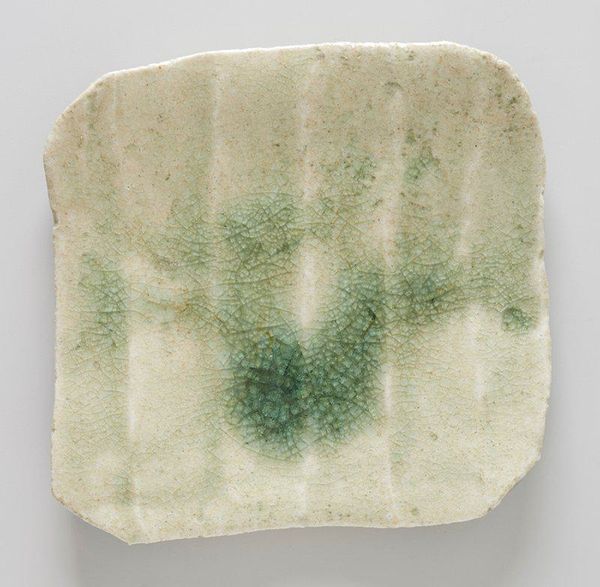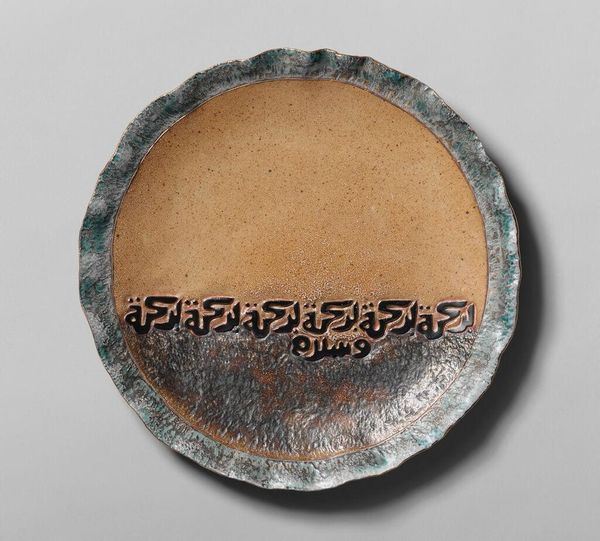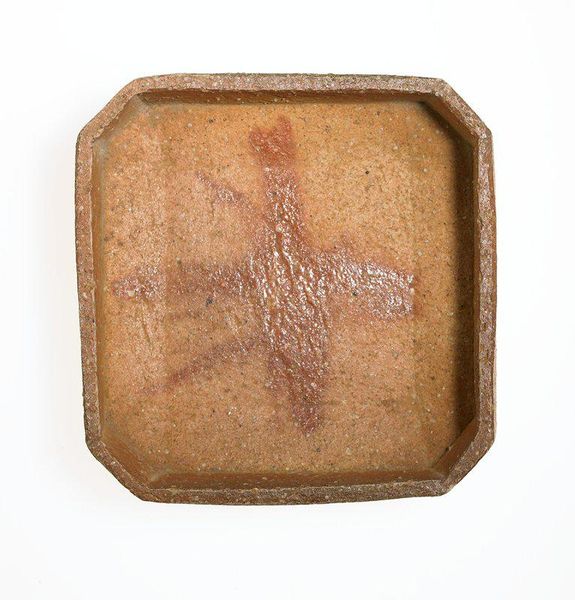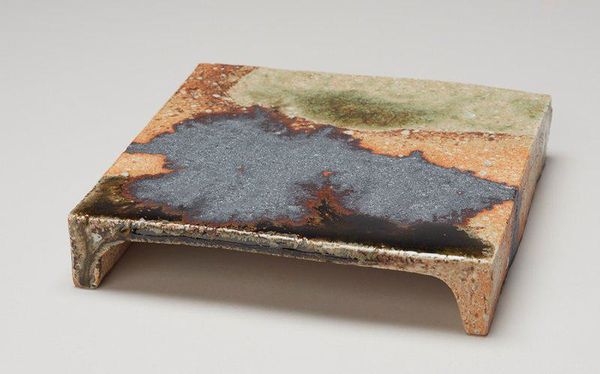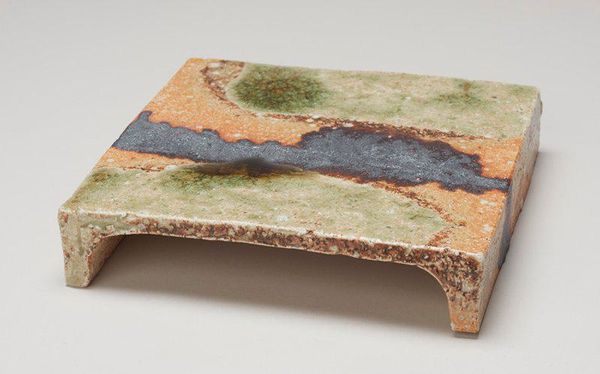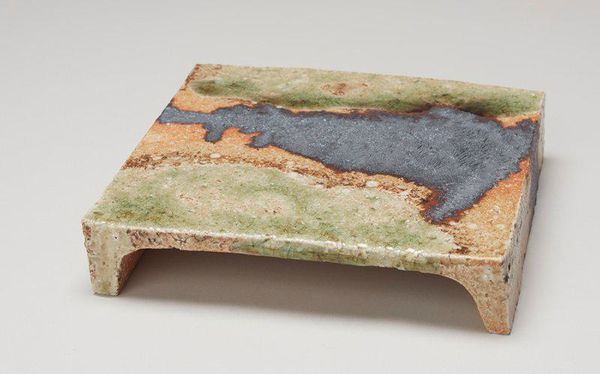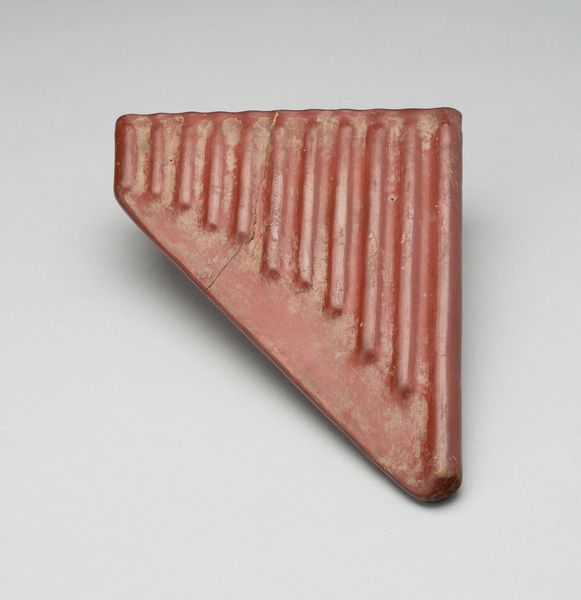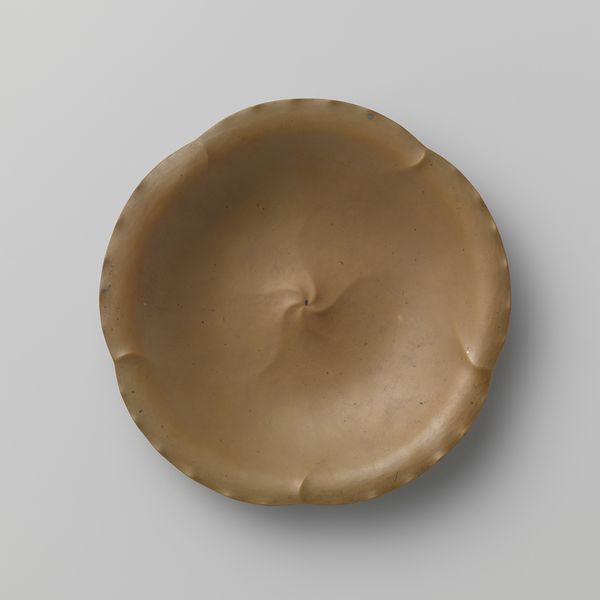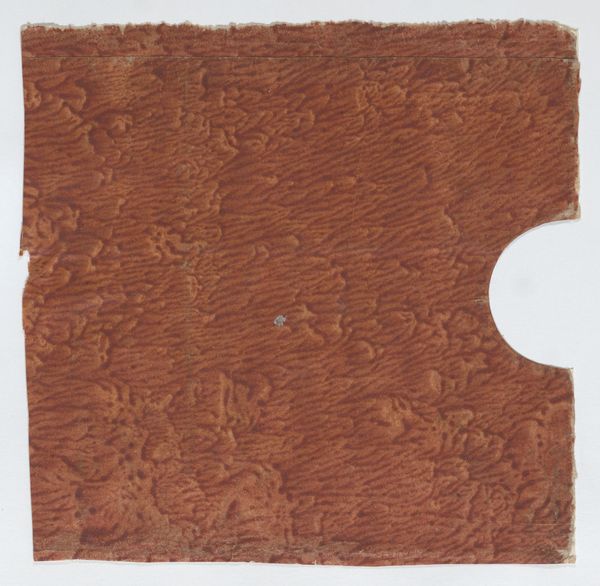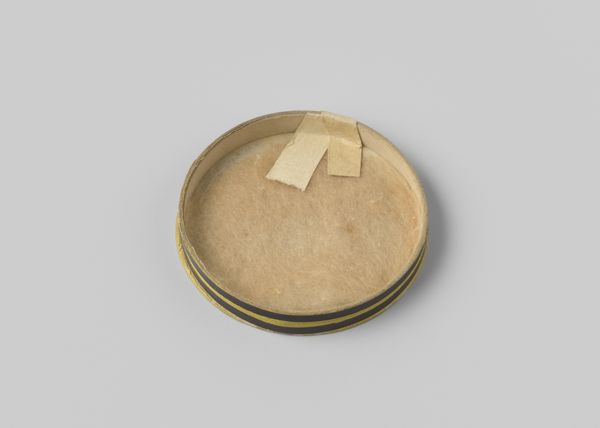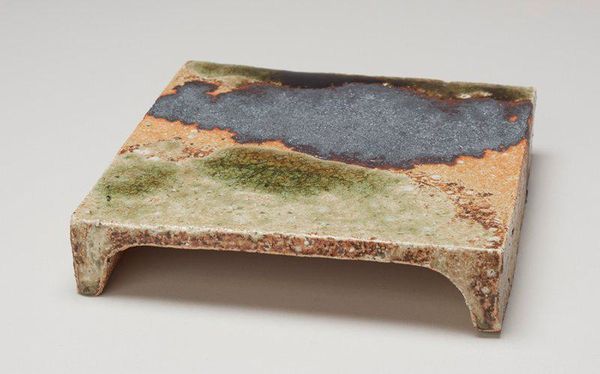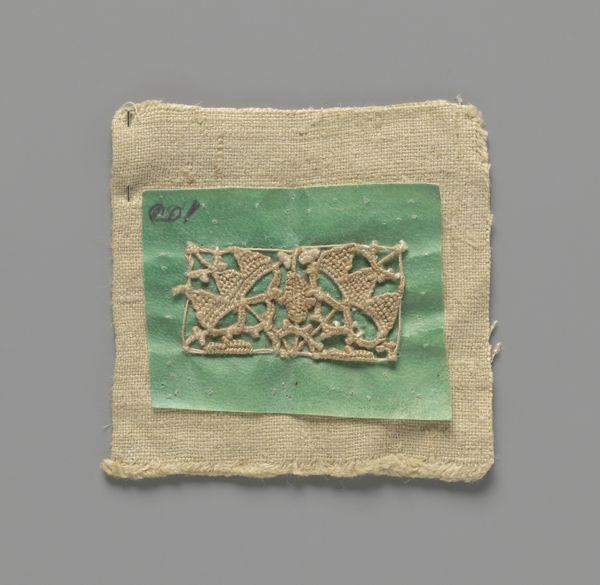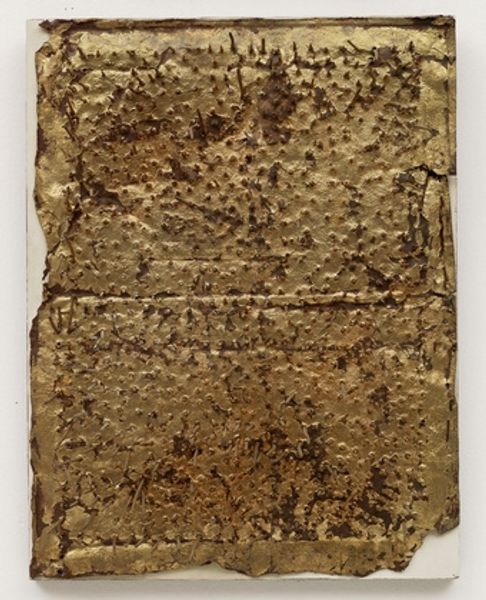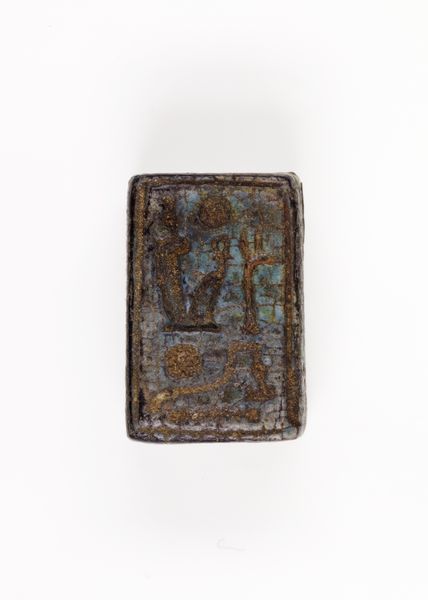
ceramic, earthenware
#
asian-art
#
ceramic
#
japan
#
earthenware
#
stoneware
#
modernism
Dimensions: 1 5/16 x 7 3/8 x 7 5/16 in. (3.33 x 18.73 x 18.57 cm)
Copyright: No Known Copyright
Editor: Here we have Kitaōji Rosanjin’s “Iga Plate,” made around the 20th century using earthenware. It's small and rather unassuming, but I'm fascinated by the raw, almost accidental quality of the glazing. How do you interpret this piece, particularly considering Rosanjin's background? Curator: Rosanjin was obsessed with materiality. Looking at this plate, think about the process, the labor involved. He moved away from perfect porcelain forms towards celebrating the imperfections inherent in earthenware, specifically Iga ware with its origins in functional objects. The cracking and pooling of glaze aren’t flaws; they’re evidence of the firing process. What does that say about Rosanjin's rejection of traditional hierarchies between "high art" and craft? Editor: That’s interesting. So, the value isn’t just in the finished product, but in showcasing the means of production, almost like an unintentional record of the kiln's environment? It's far removed from flawless ceramics, where the maker strives to hide the hand. Curator: Precisely! Consider the historical context. Modernism questioned established artistic boundaries. Rosanjin elevates a humble material and a functional form by embracing chance, drawing attention to the agency of the materials themselves, to the transformative process of firing. Editor: It seems he’s suggesting the clay and the fire are active collaborators in creating the final piece, a step removed from emphasizing his own artistry, blurring distinctions between artist and material, which is a bold move, considering that, as I now realize, the modern period of Japan was about to enter one of its most difficult times in history. Curator: Exactly. Paying attention to the materials, to labor, brings into view the historical backdrop. These details often remain hidden in traditional interpretations of ceramics. So what have you learned? Editor: I’ve definitely learned to look beyond aesthetics and appreciate the material story embedded in the art object, and also what these materials tell us about the cultural climate it came from. Curator: And hopefully, that's changed how you will perceive all artwork going forward.
Comments
No comments
Be the first to comment and join the conversation on the ultimate creative platform.
